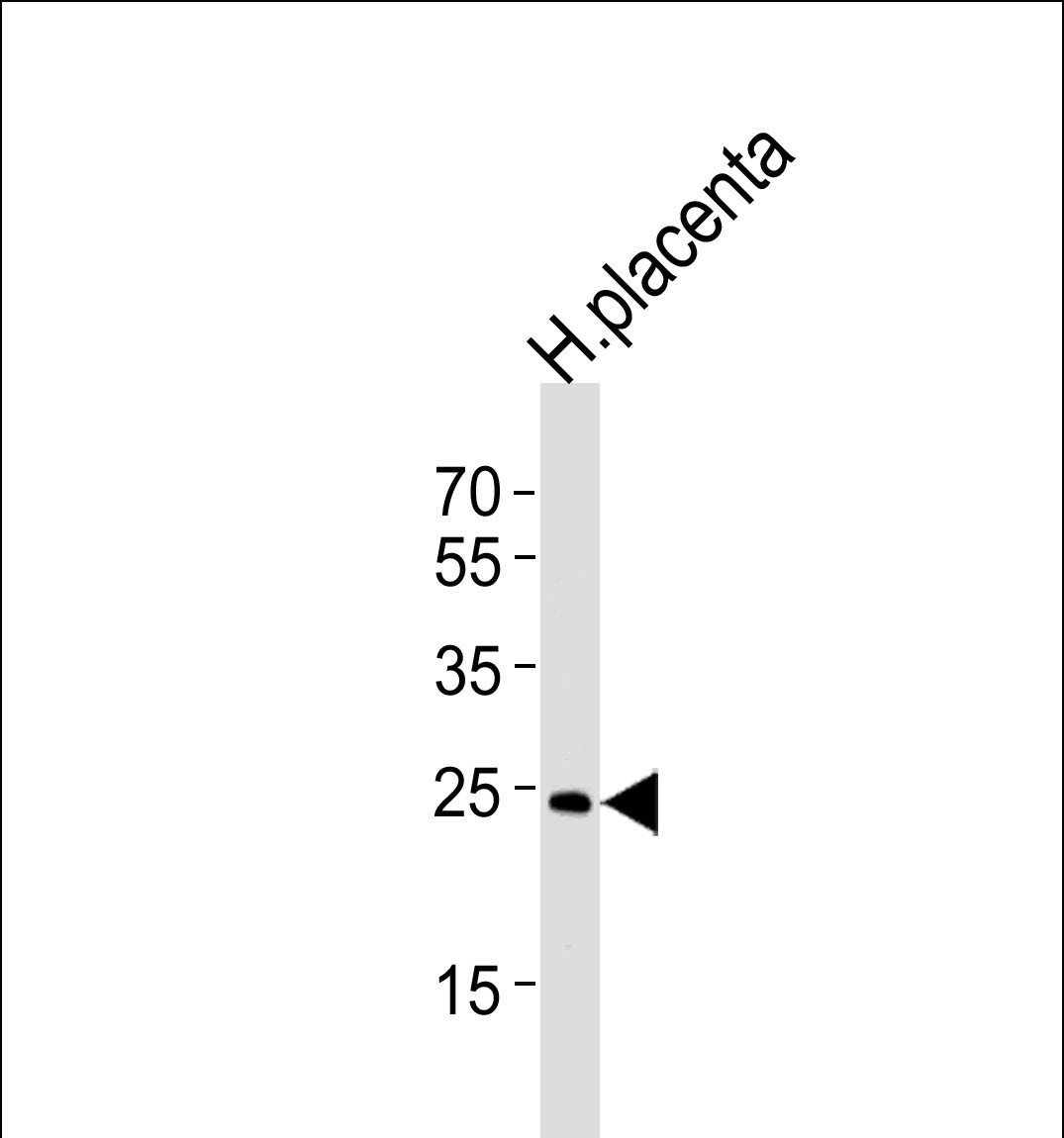ANP32B Antibody (N-term)
Affinity Purified Rabbit Polyclonal Antibody (Pab)
- SPECIFICATION
- CITATIONS
- PROTOCOLS
- BACKGROUND

Application
| WB, E |
|---|---|
| Primary Accession | Q92688 |
| Other Accession | Q3SZC6, NP_006392.1, Q6A1I3 |
| Reactivity | Human |
| Predicted | Bovine, Sheep |
| Host | Rabbit |
| Clonality | Polyclonal |
| Isotype | Rabbit IgG |
| Calculated MW | 28788 Da |
| Antigen Region | 17-45 aa |
| Gene ID | 10541 |
|---|---|
| Other Names | Acidic leucine-rich nuclear phosphoprotein 32 family member B, Acidic protein rich in leucines, Putative HLA-DR-associated protein I-2, PHAPI2, Silver-stainable protein SSP29, ANP32B, APRIL, PHAPI2 |
| Target/Specificity | This ANP32B antibody is generated from rabbits immunized with a KLH conjugated synthetic peptide between 17-45 amino acids from the N-terminal region of human ANP32B. |
| Dilution | WB~~1:1000 E~~Use at an assay dependent concentration. |
| Format | Purified polyclonal antibody supplied in PBS with 0.09% (W/V) sodium azide. This antibody is purified through a protein A column, followed by peptide affinity purification. |
| Storage | Maintain refrigerated at 2-8°C for up to 2 weeks. For long term storage store at -20°C in small aliquots to prevent freeze-thaw cycles. |
| Precautions | ANP32B Antibody (N-term) is for research use only and not for use in diagnostic or therapeutic procedures. |
| Name | ANP32B |
|---|---|
| Synonyms | APRIL, PHAPI2 |
| Function | Multifunctional protein that is involved in the regulation of many processes including cell proliferation, apoptosis, cell cycle progression or transcription (PubMed:18039846, PubMed:20015864). Regulates the proliferation of neuronal stem cells, differentiation of leukemic cells and progression from G1 to S phase of the cell cycle. As negative regulator of caspase-3-dependent apoptosis, may act as an antagonist of ANP32A in regulating tissue homeostasis (PubMed:20015864). Exhibits histone chaperone properties, able to recruit histones to certain promoters, thus regulating the transcription of specific genes (PubMed:18039846, PubMed:20538007). Also plays an essential role in the nucleocytoplasmic transport of specific mRNAs via the uncommon nuclear mRNA export receptor XPO1/CRM1 (PubMed:17178712). Participates in the regulation of adequate adaptive immune responses by acting on mRNA expression and cell proliferation (By similarity). |
| Cellular Location | [Isoform 1]: Nucleus. Cytoplasm Note=Accumulates in the nuclei at the S phase. |
| Tissue Location | Expressed in heart, lung, pancreas, prostate and in spleen, thymus and placenta. |

Thousands of laboratories across the world have published research that depended on the performance of antibodies from Abcepta to advance their research. Check out links to articles that cite our products in major peer-reviewed journals, organized by research category.
info@abcepta.com, and receive a free "I Love Antibodies" mug.
Provided below are standard protocols that you may find useful for product applications.
Background
Multifunctional protein working as a cell cycle progression factor as well as a cell survival factor. Required for the progression from the G1 to the S phase. Anti-apoptotic protein which functions as a caspase-3 inhibitor. Has no phosphatase 2A (PP2A) inhibitor activity (By similarity).
References
Tochio, N., et al. J. Mol. Biol. 401(1):97-114(2010)
Shen, S.M., et al. Carcinogenesis 31(3):419-426(2010)
Chemnitz, J., et al. Eur. J. Immunol. 39(1):267-279(2009)
Munemasa, Y., et al. Mol. Cell. Biol. 28(3):1171-1181(2008)
Olsen, J.V., et al. Cell 127(3):635-648(2006)
If you have used an Abcepta product and would like to share how it has performed, please click on the "Submit Review" button and provide the requested information. Our staff will examine and post your review and contact you if needed.
If you have any additional inquiries please email technical services at tech@abcepta.com.













 Foundational characteristics of cancer include proliferation, angiogenesis, migration, evasion of apoptosis, and cellular immortality. Find key markers for these cellular processes and antibodies to detect them.
Foundational characteristics of cancer include proliferation, angiogenesis, migration, evasion of apoptosis, and cellular immortality. Find key markers for these cellular processes and antibodies to detect them. The SUMOplot™ Analysis Program predicts and scores sumoylation sites in your protein. SUMOylation is a post-translational modification involved in various cellular processes, such as nuclear-cytosolic transport, transcriptional regulation, apoptosis, protein stability, response to stress, and progression through the cell cycle.
The SUMOplot™ Analysis Program predicts and scores sumoylation sites in your protein. SUMOylation is a post-translational modification involved in various cellular processes, such as nuclear-cytosolic transport, transcriptional regulation, apoptosis, protein stability, response to stress, and progression through the cell cycle. The Autophagy Receptor Motif Plotter predicts and scores autophagy receptor binding sites in your protein. Identifying proteins connected to this pathway is critical to understanding the role of autophagy in physiological as well as pathological processes such as development, differentiation, neurodegenerative diseases, stress, infection, and cancer.
The Autophagy Receptor Motif Plotter predicts and scores autophagy receptor binding sites in your protein. Identifying proteins connected to this pathway is critical to understanding the role of autophagy in physiological as well as pathological processes such as development, differentiation, neurodegenerative diseases, stress, infection, and cancer.


